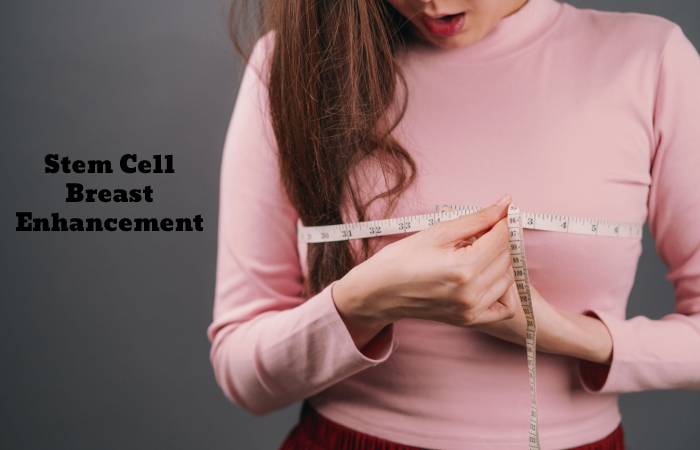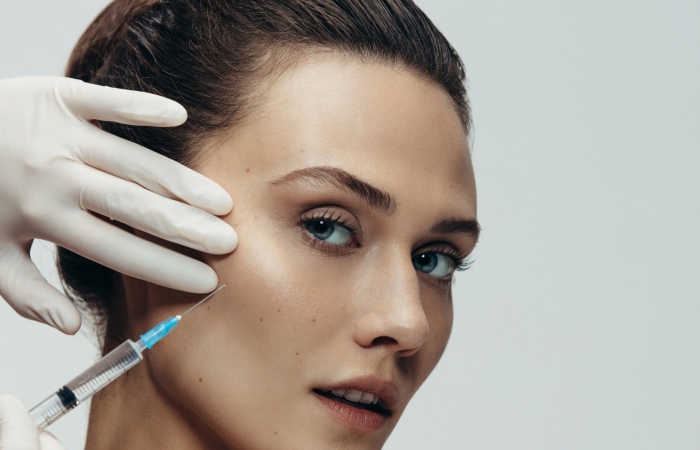Stem Cells In Skincare Treatments – Stem cells are a trendy anti-aging ingredient. Cosmetic companies, spas, and even some doctors advertise their use as a “fountain of youth” that can rejuvenate the skin and body and enhance cosmetic procedures. There is no doubt that these cells are rigid and have great potential to treat various conditions, but they are more hype than science regarding their effectiveness in aesthetic applications.
Stem Cell Therapy for Facial Transformation Aging can cause damage to our body, especially the face. It also dramatically reduces collagen production, causing some of the most visible signs of aging. For example, scars are due to a decrease in collagen production. The combination of exposure to the sun and wind, the effects of gravity, and the loss of collagen all make it look old and tired. Wrinkles and other aging products can recover with umbilical cord-derived stem cell therapy. Stem cell aesthetics is an innovative new treatment that has the potential to help regenerate damaged skin.
Table of Contents
Skincare Treatments – Stem Cells In Skincare Treatments
Sephora customers often favor the following goods when searching for Skincare Treatments.
Several options are available if you’re looking for skin care treatment to help you look younger. Some are designed to improve the arrival of fine lines and wrinkles, while others attack acne or redness. Finally, there’s a product for you without substance, what your skin naturally is.
Plant Stem Cells In Cosmeceuticals
Human stem cells offer the most significant potential for treating human diseases, while plant stem cells collect the money of large numbers of consumers. As a result, many commercial products contain plant stem cells from tough plants such as Swiss apples, Gamay vines, and argan trees. This trend takes advantage of the hype surrounding stem cell research.
Company marketing sources often suggest the power of plant stem cells to stimulate collagen and power genes. It is “natural” and is better or more effective than traditionally prescribed topical medications. But do cosmeceuticals with plant stem cells give more actual results than products without them?
The claim that plant stem cells promote or activate cell growth in human skin is unfounded, even with convincing explanations; bench researchers have studied cell biology for over 30 years. Dr. John Sanderson, a doctor who does this, says. He states that no peer-reviewed scientific studies in the respected flora and medical journals support this claim. That means that products that promote the benefits of using plant stem cells to increase collagen and elastin growth, including those bearing the name of a revered dermatologist, are at best misleading.

Human Stem Cell Cosmetic Treatments
By themselves, stem cells are not a fountain of youth. When human stem cells are applied directly to the skin, they die quickly, leaving a layer of dead cells. Instead, their power comes from the chemical molecules they secrete: cytokines and growth factors. These molecules talk to your body and tell you what to do, such as healing damaged tissue and growing new cells.
That means extracting cytokines and growth factors from human stem cells and applying them to the skin. These small molecules, one-tenth to one-trillionth the size of a cell, can penetrate the skin barrier and instruct cell receptors to replicate and grow new tissue.
However, cytokines and growth factors are by-products, not stem cells. Therefore, promoting human stem cells as an active ingredient is poor marketing and probably a bad science. On the other hand, cosmeceuticals covering cytokines and growth factors can stimulate collagen and elastin. Dr. Sanderson said in a product line he created for use during topical and microneedle medical procedures. Including CelleseAnteAge.
Stem Cell Face Lift – Stem Cells In Skincare Treatments
A stem cell facelift is a process that uses fat sucked from the patient’s body to increase facial volume. Fat is removed by liposuction, processed in a laboratory centrifuge, and injected into a specific area, usually the cheeks or lips. Sounds good.
This process, unlike collagen injection, is similar to a soft tissue filler but is not FDA-approved. In addition, it is somewhat controversial because the results are unpredictable and can cause adverse reactions.
Fat does not die on the move because it naturally contains stem cells that help the body grow new blood vessels and nourish them. Therefore, it is possible to promote the movement of fat by stem cells and further stimulate the growth of blood vessels. However, the more stem cells there are, the better.
But in addition to being pro-inflammatory (bad for cosmetological treatments). Removing fat can easily be confusing. For example, if you bring them too close to the bone, adipose stem cells may think they are bone marrow stem cells, transform into them, and start growing bone. One adverse event has already been reported in patients getting this treatment.
Stem Cell Breast Enhancement
Breast augmentation with a fat transplant is a cosmetic surgery that removes fat from a part of the body and injects it into the breast. It is often marketed as a more natural look and feels method for breast enlargement or reconstruction than silicone or saline breast augmentation surgery.
Some doctors are starting to sell this procedure as a stem cell therapy because fat naturally has stem cells that help the transferred fat survive in new locations. However, in most cases, this is a new marketing spin for existing cosmetic surgery, and the American Society for Cosmetic Surgery (ASAPS) tends to frown.
Even if physicians offer a new liposuction breast augmentation protocol that concentrates liposuction fat on stem cells, there is limited scientific evidence that it improves fat viability or appearance. In a joint statement released in 2011, ASPS and ASAPS outlined their position on using stem cells in cosmetological procedures and, by scientific evidence, “on unsupported advertising claims and clinical practice using stem cells. Increasing concerns have been raised. Buyers Beware

When Buying Stem Cell-based Cosmeceuticals – Stem Cells In Skincare Treatments
When buying stem cell-based cosmeceuticals, consumers should read an independent study examining the company’s claims before reaching for a wallet. Unfortunately, many estheticians cannot explain how plant stem cells function or contribute to skin health, and even dermatologists may not understand the finer details of cell communication. There is.
In addition, you need to ask about the injection of stem cells into your body. The National Institutes of Health database lists dozens of clinical trials investigating the use of human stem cells to treat disease, which proved effective or risk-free. However, it does not get nasty that you are. For invasive cosmetological procedures, patients should consult a board-certified plastic surgeon or dermatologist who practices evidence-based medicine. Many doctors and experts agree that human stem cells have great expectations, but that’s all they have to offer so far.
Stem Cell Treatment for Facial Rejuvenation

Aging can cause damage to our bodies, especially the face. It also significantly reduces collagen production, causing some of the most visible signs of aging. For example, scars are due to a decrease in collagen production. The combination of exposure to the sun and wind. The effects of gravity and the loss of collagen all make it look old and tired. Wrinkles and other aging products can recover with umbilical cord-derived stem cell therapy. Stem cell aesthetics is an innovative new treatment that has the potential to help regenerate damaged skin.
Stem cells contain many mesenchymal stem cells (MSCs) that can grow into cells specialized for cell differentiation. Stalk cells can differentiate/transform into other cell types. MSCs are pluripotent or can develop into other cell types. It contains cells that produce collagen and support cells for skin improvement/rejuvenation. Stalk cells show more abnormal proliferation and differentiation compared to different kinds of regenerated products.
Stem Cell Treatment Aesthetics Involves – Stem Cells In Skincare Treatments
Stem cell treatment aesthetics involves the injection of stem cells into the skin, IV, or applied to the skin after laser or micro-needling procedures. The injected stem contains stem cells, growth factors, cytokines, hyaluronic acid, and exosomes. And other cellular products involved in the body’s regenerative functions. Stem cells are the gold normal in regenerative medicine. Using cord blood and the Wharton’s jelly can yield high viability of over 80% MSC count of live nucleated stem cells post-thaw. One of the most vibrant/potent stem cell products that undergo mitosis for months to produce excellent clinical results.
Stem cell therapy can reduce scar size and provide better color quality, flexibility of the skin, and enhanced contour restoration. The wound-healing capabilities of stem cell therapy are dramatic. Patients may experience increased skin elasticity and hydration, collagen and elastin density, and proper arrangement. In addition, induced collagen and metalloproteinase production reduces wrinkles for an enhanced appearance.
Stem cells influence anti-aging properties by inhibiting melanin production. Therefore, the anti-aging effects may result in the restoration of the highest functional capacity of the skin.
